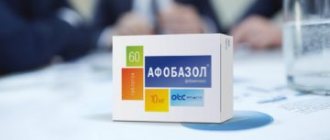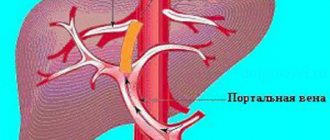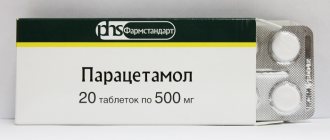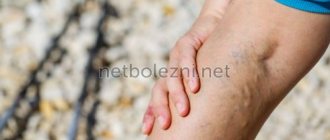Disorders of metabolic processes in the human body often lead to tissue damage. Such violations are fraught with consequences and can provoke a number of diseases. The drug Actovegin is one of the most common drugs used in various fields of medicine. The drug has the ability to restore damaged cells and improve metabolic processes. The instructions for using the medicine will allow you to familiarize yourself with the drug, but still it can only be taken as prescribed by a doctor.
Description and composition
Actovegin is a drug with a broad spectrum antihypoxic and antioxidant effect. The basic principle of action of the drug is based on tissue regeneration. The drug improves blood circulation, provides brain tissue with the necessary amount of oxygen and other useful components. Actovegin can be used in the complex treatment of many diseases. The drug provides the body with vital components and is often used for the complex treatment of a large number of diseases in adults and children, as well as pregnant women.
The active component of the drug is deproteinized hemoderivative of calf blood 50 mg, as well as auxiliary components, including sodium chloride, water for injection.
Injections and droppers - instructions for use
Ischemic stroke. Actovegin is prescribed as a dropper, introducing 20–50 ml of the active substance in 200–300 ml of saline every day for a week in a row. Then they switch to reducing the dosage to 10–20 ml of hemoderivat, and continue the procedures for another 14 days. The course of droppers is 250–500 ml per day; if symptoms are mild, the procedure is repeated every other day for 2–3 weeks. The tablet form replaces injections and droppers.
- For metabolic and vascular disorders in the functioning of the brain, treatment is short-term - one month, 5-25 ml of solution per day. 250-500 ml of the prepared solution is administered daily. Relief occurs after 2–4 weeks. Then they switch to tablets.
- Damage to blood vessels due to disorders of nervous regulation. The course begins with a dropper, 20–30 ml of the active component is administered per 200 ml of saline solution. The drug is administered at this dosage for 4 weeks. Take a ready-made solution of Actovegin - 250 ml once a day for 3-4 weeks. For mild symptoms, the procedures are repeated every other day.
- For diabetic polyneuropathy, inject 50 ml intravenously for 3 weeks or place droppers of 250–500 ml daily for 20 days. Then they definitely switch to tablets and continue treatment for 4-5 months.
- For the healing of wounds, ulcers, burns, 10 ml intravenously or 5 ml intramuscularly are prescribed. The procedure is carried out every day or with a break of a day. In the form of droppers of 25 ml.
- Prevention and treatment of radiation exposure. 5 ml intravenously every day, in between radiation therapy or as a dropper - 250 ml per day and daily, then another two weeks.
- Radiation cystitis. The drug is administered through the urethra, 10 ml of solution daily; be sure to supplement the course with antibiotics.
Pharmacological group
Actovegin in ampoules activates metabolic processes, increases the transport and accumulation of glucose to the brain. The drug restores the concentration of amino acids, ADP, ATP, and stimulates the utilization of glucose. The use of the drug stabilizes plasma membranes and improves the energy balance in tissues.
The antihypoxic effect of the drug appears within 30 minutes after parenteral administration and persists for 3 to 6 hours. Actovegin has the ability to heal tissue at the intracellular level and improve blood supply to brain structures. The principle of action of the drug increases the resistance of tissues and internal organs to oxygen starvation. The broad mechanism of action of the drug allows it to be used in various fields of medicine, but most often this drug is prescribed in neurology and cardiology in the complex treatment of a large number of diseases.
Actovegin is a multicomponent drug that contains various compounds that have a positive effect on the human body. The drug has been on the market for more than 10 years and is often used to treat diseases accompanied by metabolic disorders.
Video on the topic
Instructions for use of the drug Actovegin in the video:
Thus, Actovegin is a medicine that helps reduce intracranial, ocular and blood pressure. The mechanism of action is based on vasodilation. The therapeutic effect is observed after a quarter of an hour.
Reviews from patients and doctors about this product are good. But each person’s body is individual. Therefore, before taking it, it is important to familiarize yourself with contraindications and adverse reactions and consult a doctor.
The information on the MyMedNews.ru website is for reference and general information, collected from publicly available sources and cannot serve as a basis for making a decision on the use of medications in the course of treatment.
MyMedNews.ru
And we also have
Focusin or Omnic - which is better?
Indications for use
The instructions for the drug contain a fairly large list of diseases and conditions for which the drug can be used. Actovegin injections are often used in the complex treatment of diseases in children and adults.
for adults
The following diseases and conditions may be indications for Actovegin injections:
- hemorrhagic stroke;
- encephalopathy of various etiologies;
- disturbances in the functioning of venous, peripheral or arterial blood;
- ischemic stroke;
- cerebral metabolic disorders;
- traumatic brain injuries;
- angiopathy;
- damage to the cornea of the eye of various etiologies;
- burns up to 3rd degree;
- trophic skin damage;
- wounds that are difficult to treat;
- skin ulcers;
- bedsores.
for children
In pediatrics, Actovegin is most often used in newborns for brain hypoxia. The drug can be used from the first days of a child’s life during the acute period. The main indication for use of the drug is:
- prenatal hypoxia;
- TBI during childbirth;
- burns.
Indications for use include postpartum trauma in a child, cerebrovascular accident and other serious conditions.
for pregnant women and during lactation
Actovegin can be used during pregnancy, but with caution and under the strict supervision of a doctor. The drug is considered very safe for the fetus and the woman herself. It is often used for the following conditions:
- disruption of placental blood supply;
- underdevelopment of the placenta;
- diabetes, type I or II;
- arterial hypertonicity;
- Rh factor conflict between the blood of the fetus and mother;
- oxygen deficiency of the placenta and embryo.
Actovegin injections can be prescribed to pregnant women and as a prophylaxis in the presence of a risk of miscarriage or premature birth. Many doctors do not recommend using the drug when breastfeeding.
Do vasodilators and vascular drugs help with neck osteochondrosis?
The course of osteochondrosis of the cervical spine has its own characteristics.
They are associated with the passage of the vertebral arteries in the canal created by the transverse processes of the vertebrae.
With degeneration of the cartilaginous disc, the distance between the vertebrae decreases, spondylolisthesis of one degree or another occurs, and all this, together, leads to a distortion of the course of the vascular bed.
Frequent concomitant vascular pathology
And since osteochondrosis mainly affects mature age (after 30-40 years), its course is often accompanied by other background vascular pathology.
Atherosclerosis, hypertension, as well as secondary arterial hypertension, lead to changes in the vascular wall with subsequent narrowing of the lumen of the arteries.
Structural changes in the walls of arteries and the appearance of tortuosity in their course are accompanied by changes in blood viscosity, which leads to the formation of sludge of formed elements.
Sludge (layering of red blood cells and platelets on top of each other in the form of columns of coins) leads to disruption of blood flow in small vessels, up to the capillary block.
Vertebro-basilar insufficiency
Thus, VBN syndrome, which developed against the background of cervical osteochondrosis, is a multifactorial condition. And, in this case, only those things that are still capable of responding to treatment are subject to therapeutic correction, for example, vascular tone and aggregation of blood cells.
Therefore, when treating VBI against the background of cervical osteochondrosis, it is important to take into account all concomitant diseases of vascular etiology.
In any other case, the therapeutic emphasis placed exclusively on cervical osteochondrosis will not give the desired therapeutic effect, especially since osteochondrosis itself is not subject to drug therapy.
Medications for the correction of vascular pathology
Treatment of cerebral circulatory disorders in cervical osteochondrosis does not differ from that for any other disease of vascular etiology.
The therapeutic plan of prescriptions, in addition to the constant use (if indicated) of antihypertensive, lipid-lowering drugs and drugs that control blood clotting, includes so-called vascular drugs, used not only for cervical osteochondrosis.
The essence of “vascular” drugs
Vascular drugs are a very streamlined definition for the medications used, since the groups of drugs used that are included in the concept of “vascular” are in no way united by either a common mechanism of action or point of application. In order not to distort the truth, it is enough to divide the medications prescribed by doctors into several groups, according to their mechanism of action:
- Vasodilator drugs used for neck osteochondrosis are drugs that selectively affect the tone of cerebral vessels. Such drugs, often prescribed for cervical osteochondrosis, include Cavinton;
- Antiplatelet drugs, for example, trental. Previously, quite often, for cervical osteochondrosis, a cerebral circulation drug such as complamine or xanthinol nicotinate was used.
The drug has a dual effect: both vasodilating and antiaggregation.
But due to its histamine-releasing effect, taking Complamin is not recommended for some, especially sensitive patients;
- Nootropic medications that have a positive effect on the metabolism of brain neurons, for example, piracetam;
- Substances that affect oxidative stress or antioxidant drugs, for example, Mexidol;
- Products with a general metabolic effect without a specific point of application, according to the principle: “For everyone who needs it.” This is Actovegin. You will learn more about the mechanism of action of Actovegin from the video:
Selective vasodilators
Cavinton occupies a leading position in prescriptions for osteochondrosis of the cervical spine. Related:
- With its selective effect on the tone of cerebral vessels, and the decrease in vascular tone is caused by different mechanisms of action;
- With its ability to optimize glucose uptake by neurons in the brain;
- With its participation in improving the rheological parameters of blood.
Thus, it turns out that Cavinton is the same panacea for vascular disorders of the brain. But in practice, its effects are exaggerated, and in narrow professional circles there is even an opinion about it as a dummy.
In any case, today Cavinton has found wide application in neurological practice.
Moreover, according to patient reviews, vinpocetine (an analogue of Quinton) in cervical osteochondrosis makes attacks of headaches milder and the periods between relapses longer. Regardless of whether Cavinton is a placebo or a really effective drug, it has found and firmly occupied its niche in the treatment of cervical osteochondrosis.
Antiplatelet therapy
Trental (pentoxifylline) is an antiaggregation agent, the result of which is the mechanism of action:
- Increasing the plasticity of erythrocytes and platelets. As a result of this, blood cells become able to pass to the end of the microcirculatory bed without deformation and sludge formation;
- Dilatation of microvasculature vessels, which, together with improved quality indicators of platelets and red blood cells, leads to increased blood fluidity. And this, in turn, improves oxygen saturation of surrounding tissues.
Nootropics
Piracetam (nootropil) belongs to a large group of nootropic drugs that improve the cognitive-mnestic function of the cerebral cortex.
In simpler words - increase memory and learning ability. The mechanism of action of nootropics is associated with the effect on neurotransmitter metabolism.
In addition to the main mechanism of action, researchers noted the ability of nootropics to increase the uptake of glucose by neurons and improve blood flow. The use of piracetam for cervical osteochondrosis is also a category of mythical panacea.
Despite the presence of a clearly positive effect in some conditions, piracetam is not recommended for use in cases of a tendency to seizures, severe atherosclerosis and, oddly enough, in Alzheimer's dementia.
Antioxidant therapy
Mexidol is the leader of antioxidant therapy in all areas of urgent therapy. Previously, its place was taken by vitamin E and emoxypine. To understand how the drug works, you need to know what happens to tissues during vascular (and other) disasters. Any severe pathology, first of all, entails acute oxygen starvation of tissues (hypoxia).
Hypoxia triggers chemical reactions resulting in the formation of toxic forms of oxygen that destroy the cell membranes of suffering tissues. So Mexidol, in fact, is a trap for these most aggressive forms of oxygen.
By preventing destruction, it gives a respite to the suffering tissue until adequate blood circulation is restored.
According to the proposed mechanism of action, the drug should be worth its weight in gold. But practice is a cruel test for all theoretical research. Yes, Mexidol brings some positive effect to the condition of patients, but not as expected.
Metabolic drugs
Actovegin (solcoseryl) is a derivative of the blood of young calves. Nobody knows how it really affects the human body, and it began to be widely used only based on the accumulated experience of use.
For cervical osteochondrosis, Actovegin is used as a drug that increases the energy potential of nervous and other tissues that are under unfavorable conditions of hypoxia.
Under the influence of Actovegin, cellular metabolism increases, thereby activating the processes of restoration of damaged tissue.
What to remember
And do not forget that increased pressure in osteochondrosis of the cervical spine is treated with a combination of drugs from a whole section of antihypertensive drugs, to which neither Complamin, nor Cavinton, nor nootropil with Mexidol have anything to do.
And the nausea that occurs with cervical osteochondrosis is not a separate symptom that requires special treatment; it is part of the general neurological symptoms caused by impaired cerebral circulation.
Calcium channel blockers with a selective effect on cerebral vessels are considered a separate branch of drugs that improve cerebral circulation, including for cervical osteochondrosis.
One of the old remedies is stugeron (cinnarizine). Among the new ones is nimotop. You will learn more about the drug Nimotop from the video:
The mechanism of their action made these drugs considered highly effective, but in reality their potential for action turned out to be very modest.
Summarizing the therapeutic results of using certain vascular agents, we can say that there is no one best drug that improves cerebral circulation in cervical osteochondrosis.
And, by the way, the treatment of cerebral circulatory disorders with cervical osteochondrosis is carried out in a course, without any further constant drug support, as, for example, with hypertension.
Therefore, a temporary improvement in the condition of patients will certainly be replaced by another deterioration. In this regard, it is reasonable to combine periodic courses of drug therapy with constant correction of concomitant pathology and a radical solution to the issue of cervical osteochondrosis.
Applications and dosages
Actovegin solution is intended for intra-arterial, intramuscular, intravenous administration. If necessary, the drug is administered into the vascular bed in the form of infusions. Despite the good tolerability of the drug, a sensitivity test must be performed before using it.
For adults
According to the instructions for the drug, Actovegin solution is prescribed individually for each patient, depending on the diagnosis, the patient’s age, and the method of administration.
- When administered intravenously, the drug is diluted in a 5% glucose solution or in 0.9% sodium chloride. The daily dose should not exceed 2000 mg per ¼ liter of solution.
- When administered intramuscularly, the dosage is no more than 5 ml per day.
- Intra-arterial administration of the drug varies from 5 to 20 ml per day.
Treatment with Actovegin ranges from 10 days to several weeks or months.
For children
The daily dose of the drug is calculated as 0.4-0.5 ml per 1 kg of body weight intramuscularly. Treatment with Actovegin significantly increases and improves the prognosis for recovery.
For pregnant women and during lactation
For pregnant women, the dose of the medicine is determined by the doctor individually for each patient.
After using the injections, the effect does not appear so quickly. The positive effect from taking it may appear no earlier than after 1 week and will persist for several months.
How to take the drug
Before you start taking any medication, especially one that affects the cellular level, medical consultation is necessary.
Only a doctor, based on examination, tests and experience, can accurately assume in your case whether Actovegin lowers blood pressure or not, or, conversely, whether Actovegin can increase blood pressure under certain conditions. You should not neglect the opinion of a specialist and practice self-medication according to the principle: “Masha drank and it helped her.”
In addition to the fact of prescription, the attending physician will determine the form of the drug, the working dosage and duration of therapy, depending on the general condition of the patient and the advanced state of the disease. In the instructions for various dosage forms, there are the following recommendations:
- Intravenous injections are permissible only after testing for drug tolerance and are carried out over a 10-day course at a dosage determined by the doctor.
- The tableted product is used in courses of 30-45 days, 1-2 tablets three times a day before meals, washed down with plenty of water.
- Dragees are taken in the same way, but only 1 piece. Both products are swallowed whole.
- External agents are applied, depending on severity, 1-3 times a day, directly to the affected area.
Since the medicine is made from natural ingredients, it is important to strictly adhere to expiration dates and under no circumstances use expired medications.
Side effects
The drug is well tolerated, but in rare cases, after administration of the drug, adverse reactions of the body may appear:
- anaphylactic reactions;
- pain in the injection area;
- headache;
- dyspeptic symptoms;
- tachycardia;
- rash on the body;
- increased arousal;
- breathing problems;
- difficulty breathing;
The medicine has no toxic effect on the body and is not addictive. If the patient has hypersensitivity to Actovegin, the doctor may prescribe analogues of the drug. The closest analogue of the drug is Solcoseryl.
ACTOVEGIN
Contents
hide
1 ACTOVEGIN
2 Clinical and pharmacological group
3 Active ingredient
4 Release form, composition and packaging
5 Pharmacological action
6 Actovegin - instructions for use, reviews, analogs and release forms (tablets, injections in injection ampoules, ointment, gel and cream) medications for the treatment of metabolic disorders of the brain in adults, children (newborns) and pregnancy
7 Actovegin for the prevention of blood vessels dosage
8 What injections are given intramuscularly for high blood pressure: list and names 8.1 Magnesia: instructions for use
8.2 Actovegin: how to use for hypertensive patients?
8.3 Mexidol
8.4 Additional recommendations 8.4.1 Last questions for specialists:
8.4.2 Materials used in the article:
Interaction with other drugs
The drug is often combined with other drugs. There is no data on drug incompatibility.
Reviews from doctors, as well as from patients who were treated with Actovegin, are very positive. Many note the high effectiveness and good tolerability of the drug after just a few days of use. The injection solution is best used in a hospital setting, but it can be used on an outpatient basis, and only a medical professional with extensive experience can administer the medicine.
Analogues of the drug
The drug "Solcoseryl" is completely identical. According to the description, this substitute is manufactured using the same technology and also contains deproteinized hemoderivative of calf blood. A special feature is that solcoseryl does not include a preservative, which increases the shelf life of Actovegin, but at the same time negatively affects the liver. Its price starts from 800 rubles. Here are a few more Actovegin analogues in ampoules:
- "Cerebrolysin". New generation drug. Indicated for mental retardation in children, spinal cord and brain injuries, ischemic stroke. Price from 600 rub.
- "Cortexin". A nootropic medicine that improves brain function, positively affecting attention, learning and memory. Price from 800 rub.
Analogs
Actovegin is a drug that provides tissue regeneration; it has no full-fledged analogues in composition; drugs from the same pharmacological group are considered as its substitutes.
Cerebrolysin
The active ingredient in Cerebrolysin is obtained from animal products. The composition ensures restoration and normalizes the functioning of nerve cells. The product is produced only in the form of a solution intended for injection. The treatment regimen is selected individually; to achieve therapeutic effectiveness, a course lasting 4 weeks is required.
Cortexin
Cortexin is produced in the form of a powder intended for the preparation of a solution for intravenous administration. According to its pharmacological properties, the drug belongs to the group of nootropic compounds. The product restores the normal course of chains of biochemical processes in the human body. The advisability of use in pediatric practice, as well as during pregnancy and breastfeeding, is determined privately. The remedy is often recommended for use after head trauma and brain contusions.
Action of Actovegin
Hemoderivat is easily absorbed. Its optimal level in plasma is achieved within 2-6 hours - it all depends on the individual characteristics of the body. The drug is completely natural, pharmacokinetics are difficult to trace. All components are present in one degree or another in the body of any person.
The effectiveness of the drug does not decrease due to kidney and liver diseases. In older patients, the absorption of the working components of the drug is also not impaired.
Penetrating into the body, hemoderivat has a positive effect on the transport of oxygen, due to this the metabolic process is stabilized. The antihypoxic effect of the drug is felt half an hour after taking the drug.
Actovegin is a broad-spectrum metabolic stimulator. It improves the nutrition of brain cells and saturates other organs and tissues with oxygen. During treatment, the patient's hypoxia increases.
Hemoderivat promotes the production of ATP, which is necessary for the occurrence of important processes in the cells of the body. Against this background, the healing of skin injuries of any nature is accelerated - abrasions, cuts, ulcers, burns. Tissue cell restoration is accelerated.
Use of Actovegin for VSD
Actovegin for VSD is used to treat various pathologies in people of any age.
To prescribe the drug, you need to see a doctor and undergo an examination. Source: //vseolady.ru/primenenie-aktovegina-pri-vsd.html
Vegetative-vascular dystonia.
Causes of vegetative-vascular dystonia
This disease manifests itself in the form of neurosis, which imitates the symptoms of chronic lesions. VSD appears in a person after severe stress. The causes of the development of vegetative-vascular dystonia are:
- a person’s predisposition to this disease - in such cases, signs of VSD appear in the patient in early childhood;
- lesions of the hypothalamus, brain stem or other parts of the central nervous system;
- damage to the stomach and intestinal tract, heart, blood vessels or endocrine problems;
- chronic fatigue, stress, overexertion.
The situation is complicated by concomitant depression, a person’s inability to explain what is happening to him. Hypochondria develops and a feeling of anxiety arises. Emotionally unstable people, alcoholics or smokers get into a serious condition.
Causes of VSD.
Symptoms of VSD
Signs of the disease affect almost all organs, but at first they can appear in any one, capturing more and more new areas over time. Symptoms of the disease with VSD of the hypotonic type are as follows:
- a disturbance in the normal rhythm of the heart muscle beat develops (tachycardia, extrasystole, bradycardia);
- blood pressure can change upward or downward at any time;
- the patient develops pale skin and complains of coldness in the hands and feet;
- Painful sensations develop in the chest area that do not go away even after taking nitroglycerin.
Symptoms of VSD When VSD occurs, hyperventilation syndrome may appear. The person's breathing quickens and he complains of a lack of oxygen. Muscle spasms develop. Sensitivity in the areas around the mouth and hands is impaired. Dizziness appears.
Signs of VSD may appear in the stomach area:
- your stomach starts to hurt;
- a person is tormented by a constant urge to defecate;
- appetite is impaired, vomiting and nausea develop;
- Symptoms of gastric ulceration occur in the complete absence of the disease itself.
With VSD, the patient experiences increased sweating on the palms and soles. VSD is characterized by a negative impact on the sexual performance of men and women. With almost all signs of illness, the patient experiences an increase in temperature and complains of chills.
Source: //vseolady.ru/primenenie-aktovegina-pri-vsd.html
Actovegin for VSD
This drug has a fairly broad effect on the body. In case of vegetative vascular dystonia, the medicine has the following effects on the patient:
- Stimulates energy and metabolic flows. This relieves depression and activates the functioning of the heart and stomach.
- Increases oxygen flow. Difficulty breathing is eliminated. Spasms and chills disappear.
- Cells receive nutrition when there is insufficient blood supply. Bypass capillaries begin to develop, carrying useful substances to various organs.
- Glucose processing increases. This improves brain performance.
- The healing of damaged tissues is accelerated. Regeneration allows for increased growth of blood vessels.
Self-medication with this medicine is prohibited due to the large number of side effects.
Actovegin release form
This product is produced in the following form:
- ampoules for injections;
- solutions for infusions;
- pills;
- ointment, cream or gel.
Injections can contain from 80 to 400 mg of the treatment component. They are available in ampoules of 2.5 and 10 ml.
Solutions for infusion contain up to 25.5 ml of the desired substance. The bottle volume is 0.25 l.
The tablets contain up to 0.2 g of active ingredients. Pills are packed in 50 pcs. in 1 bottle.
Ointments and creams contain 5% Actovegin. They are sold in tubes ranging from 20 to 100 g. The gel contains up to 20% of the healing components. They are available in tubes of 20, 30, 50 and 100 g.
Mode of application
Packaging Actovegin.
If the doctor prescribed Actovegin in tablets, then it is recommended to take them 1-2 pieces. 2 times a day. It is better to do this before eating. Therapy with this type of medication lasts 15-30 days.
If VSD reveals signs of neuropathy, then intravenous infusion is prescribed. The volume is up to 2 g per 24 hours. The course lasts 20-25 days. Then the patient is transferred to Actovegin tablets. He should take 2-3 pieces. per day. A person is treated with this method for 120-150 days.
If you need to induce accelerated regeneration, the doctor prescribes an ointment. It is applied to a bandage and applied to the damaged area. This should be done 4 times a day. If the patient has bedsores or radiation burns, the procedure is carried out up to 3 times a day.
Use gel or cream in the same way.
Actovegin injections
They are performed in the form of intramuscular or intravenous injections. Before prescribing this type of drug, the patient must be checked for allergic resistance to the components of the drug.
For strokes or angiopathy, Actovegin is administered in a volume of 20 to 50 ml. The medicine is first diluted in 250 ml of saline solution. Therapy lasts no more than 20 days. Injections are performed daily.
In case of brain damage, the patient is administered 5 to 25 ml of Actovegin every day for 14 days. Then the patient is transferred to tablets.
If an ulcer or burn is detected, the drug is injected into a vein in an amount of up to 10 ml or intramuscularly, but then the injection volume is reduced to 5 ml. The injection can be given once or the dose can be divided into several parts. Additionally, bandages with ointment, cream or gel are applied to the affected areas.
The dosage depends on the patient’s age and weight:
- Children under 3 years old are given an injection once a day at the rate of 0.4 ml/kg;
- child under 6 years of age – 0.3-0.4 ml/kg 1 time per day;
- children under 12 years of age are prescribed 5 to 10 ml per day;
- For adults, the dose is increased to 12-15 ml.
The exact dose is determined by a specialist after diagnosis.
Side effects
Actovegin for VSD.
Actovegin is made from natural ingredients. Therefore, adverse events occur only in a portion (up to 1%) of patients. Side effects are as follows:
- pain appears at the injection site and a rash appears;
- the skin turns red and begins to swell;
- anaphylactic shock may occur;
- possible fever;
- your head hurts and feels dizzy, you feel weak;
- diarrhea, vomiting and nausea develop;
- there is discomfort in the stomach;
- possible signs of hypotension, tachycardia, hypertension;
- sweating begins to increase;
- heart muscle hurts.
Do not take the medicine together with alcohol or carbonated drinks. A contraindication for using the drug for VSD is intolerance to the components included in its composition. In a small proportion of patients (1%), when using the drug, oliguria developed, pulmonary edema appeared, and decompressive heart failure was recorded.
Analogs
You can replace Actovegin with Solcoseryl. Injections can be done with agents such as Cortexin or Cerebrolysin. Analogues of Actovegin tablets are Vero-Trimetazidine, Curantil and Dipyridamole.
For local treatment, it is recommended to use Algofin ointment. As a gel or cream, Actovegin can only be replaced with a similar form of Solcoseryl.
Source: //vseolady.ru/primenenie-aktovegina-pri-vsd.html
Source: //zen.yandex.ru/media/id/5cc410d110654100b2d87c08/5cd3e98992b85b00b3bbb4c8
What injections are given intramuscularly for high blood pressure: list and names
Have you been struggling with HYPERTENSION for many years without success?
Head of the Institute: “You will be amazed at how easy it is to cure hypertension by taking it every day.
Arterial hypertension cannot be completely cured. Hypertension is treated symptomatically. Blood pressure injections can be used as part of complex drug treatment.
In case of hypertensive crisis, Magnesia is used. The drug is also used for hemorrhagic or ischemic stroke.
Our readers successfully use ReCardio to treat hypertension. Seeing how popular this product is, we decided to bring it to your attention. Read more here...
Other injectable medications may be used to treat hypertension symptomatically. The most effective and relatively safe are Mexidol and Actovegin.
Magnesia: instructions for use
What is injected for high blood pressure, hypertensive crisis and other emergencies? In such cases, Magnesia is often used (original packaging in the photo). The drug is used even in cases where a stroke develops against the background of high blood pressure. The cost of the drug is about 70-90 rubles for 10 ampoules of 25%.
The active component of the drug is magnesium sulfate. The component has antispasmodic, diuretic, anticonvulsant, hypotensive, hypnotic and tocolytic effects.
The antiarrhythmic effect of Magnesia is due to the ability of the active component to stabilize cell membranes and reduce the excitability of cardiomyocytes. After intravenous administration, the effect appears immediately. If intramuscular injections are used, the therapeutic effect occurs in about an hour.
Indications for the use of Magnesia are:
- Hypertonic disease. It is advisable to use the medicine if blood pressure exceeds 150 to 100.
- Hypertensive crisis accompanied by swelling of the brain.
- Urinary retention.
- Encephalopathy.
- Epileptic attack.
- Poisoning with heavy metal salts or barium chloride.
- Bronchial asthma.
- Concussion.
Magnesia is used intramuscularly or intravenously in the treatment of hypertension. You cannot inject medicine into the stomach. How and in what proportion to dilute the solution is decided solely by the attending physician. The dosage and duration of therapy are also chosen strictly individually.
Contraindications to the use of Magnesia are chronic renal failure, hypotension, bradycardia, hypersensitivity to the drug, the period of preparation for childbirth, depression of the respiratory center, AV blockade. Injections should be prescribed with caution to hypertensive patients with myasthenia gravis.
- Polyuria.
- A sharp decrease in blood pressure.
- Migraine.
- Nausea.
- Atony of the uterus.
- Hypermagnesemia. Manifests itself in the form of bradycardia, shortness of breath, slurred speech, depression of the respiratory center, cardiac conduction disturbances, and loss of tendon reflexes.
- Pronounced sedation.
If there is an overdose, then it is not advisable to use Diphenhydramine or antihistamines. The patient should be immediately hospitalized and receive qualified medical care.
In case of overdose, intravenous administration of calcium gluconate, oxygen therapy, artificial respiration and further symptomatic treatment are prescribed.
Actovegin: how to use for hypertensive patients?
What injection is given for high blood pressure? Actovegin can be used for the symptomatic treatment of arterial hypertension. The cost of the medicine is about 1200-1400 rubles for 5 ampoules of 5 ml.
The active component of the drug is deproteinized hemoderivative from calf blood. The substance has a pronounced neuroprotective and metabolic effect. The active component improves the process of oxygen utilization and enhances the energy state of cells. Actovegin is widely used by diabetics in the treatment of complications such as diabetic polyneuropathy.
The drug is advisable to use in the treatment of hypertension if the blood pressure exceeds 140-150 per 90 mmHg. Indications for use also include:
- Increased intracranial pressure.
- Diseases of the brain of vascular and metabolic origin.
- Venous trophic ulcer.
- Arterial angiopathy.
- Polyneuropathy due to diabetes mellitus. The medication is suitable even for elderly diabetics.
Actovegin is a truly effective remedy. This is proven by both research and patient reviews. But you need to take into account the fact that the medicine does not have any effect on cholesterol levels. To stabilize cholesterol levels against the background of arterial hypertension, other means should be used.
How to use Actovegin? The instructions say that the medicine is administered to men and women using droppers. As a rule, the dosage is 5-20 ml/day. If necessary, the dose is increased to 20-50 ml/day. Everything will depend on the severity of hypertension.
Contraindications to the use of Actovegin are hypersensitivity to its components, decompensated heart failure, oliguria, pulmonary edema, anuria. Possible side effects:
- Dyspeptic symptoms, including abdominal pain, nausea, diarrhea and vomiting.
- Pain in the heart area, rapid heartbeat, arterial hypotension, pale skin.
- Hypersensitivity reactions. In severe cases - anaphylactic shock.
- Rapid breathing, difficulty swallowing, asthma attacks, sore throat.
- Migraine, general weakness, paresthesia, tremor of limbs, dizziness.
- Pain in joints and muscles. Sometimes lower back pain is diagnosed.
If the above side effects occur, appropriate symptomatic treatment is prescribed.
Mexidol
A product under the trade name Mexidol is an excellent remedy for high blood pressure. The medication is often used to treat hypertension at home. The cost of the medicine is about 1200-1400 rubles for 5 ampoules of 5 ml.
The active component of the drug is ethylmethylhydroxypyridine succinate. The auxiliary components are sodium metabisulfite and water for injection. The active substance of the drug has the following pharmacological effect:
- Antioxidant.
- Antihypoxic.
- Membrane stabilizing.
- Nootropic.
- Anxiolytic.
Mexidol also helps improve memory, relieve seizures, and reduce the concentration of harmful lipid fractions. Indications for the use of the drug are high blood pressure in men and women, circulatory disorders in the brain
Mexidol is intended for intramuscular injections and infusions. Moreover, both jet and drip infusion can be used. If it is necessary to install a dropper, then the contents of the ampoule are diluted in an isotonic sodium chloride solution. The daily dose of Mexidol is 1200 mg. The duration of treatment is selected individually.
Contraindications to the use of the medicine:
- Liver failure.
- Kidney failure.
- Hypersensitivity to the components of the drug.
- The medication is prescribed with caution to pregnant and lactating women.
Side effects of the medication include dry mouth, nausea, drowsiness and allergic reactions. In practice, complications occur extremely rarely.
Additional recommendations
Treatment of hypertension should be comprehensive. If necessary, the patient can be prescribed not only injections, but also tablets. The tablets Papazol (bendazole + papaverine hydrochloride), Bisoprolol, Clonidine, Metoprolol, Concor, Estekor have proven themselves well.
Hawthorn tincture, a decoction of pine cones, garlic, and raw pumpkin seeds also help lower blood pressure. Folk remedies go well with tablets and injectable medications.
It is also recommended for hypertensive patients:
- Regularly measure blood pressure. If your blood pressure is high or a hypertensive crisis develops, you should immediately call an ambulance to avoid stroke and heart attack.
- Avoid visiting the bathhouse. It is advisable not to use hot water at all for water procedures.
- To refuse from bad habits. The list of the most dangerous habits includes alcoholism and smoking. Drugs can also raise blood pressure and cause a stroke.
- Take multivitamin complexes. The list of the most effective ones includes Alphabet, Complivit, Doppelhertz Active.
- Follow a diet. To avoid a hypertensive crisis, you need to follow a low-carbohydrate diet. This is especially true for those patients who are overweight.
To stabilize blood pressure, you can additionally use dietary supplements. The strongest and safest dietary supplement is Normalife. The drug, literally in one course of treatment, allows not only to reduce, but also to stabilize blood pressure at an acceptable level.
The best modern remedy for hypertension and high blood pressure. 100% guarantee of pressure control and excellent prevention!
TO THE DOCTOR
how can I call you?:
Email (not published)
Last questions for specialists:
- Do IVs help with hypertension?
- If you take Eleutherococcus, does it lower or increase your blood pressure?
- Is it possible to treat hypertension with fasting?
- How much pressure should be reduced in a person?
Composition and mechanism of action
Actovegin is a drug that contains an extract from calf blood. The younger the animal, the more active and safer the substance included in the medicine will be. This hood includes the following components:
- amino acids;
- oligopeptides;
- microelements;
- electrolytes.
They enhance cellular metabolism, activating the transport of oxygen molecules to tissues. In addition, these components increase the ability of the cells themselves to absorb glucose and oxygen. This leads to normalization of vascular tone and expansion of their lumen. Accordingly, it cannot be said that Actovegin increases blood pressure. This drug reduces vascular tone, improves cerebral circulation, therefore it is widely used in neurology, ophthalmology, and cardiology.
The drug is available in the form of an injection solution, tablets, ointments, creams and gels. Accordingly, it is administered intravenously and intramuscularly, orally and locally, directly by application to the affected area.











